
PART zyxwvutsrqponmlkjihgfedcbaZYXWVUTSRQPONMLKJIHGFEDCBA
2
MODERN TELEPHONE
NETWORKS
Networks and Telecommunications: Design and Operation, Second Edition.
Martin P. Clark
Copyright © 1991, 1997 John Wiley & Sons Ltd
ISBNs: 0-471-97346-7 (Hardback); 0-470-84158-3 (Electronic)

10
Zntegrated Services Digital
Network (ISDN) zyxwvutsrqponmlkjihgfedcbaZYXWVUTSRQPONMLKJIHGFEDCBA
Most public telecommunication operators throughout the world have now at least commenced
the modernization
of
their networks by introducing digital transmission and digital switching into
the public switched telephone network
(PSTN).
Simultaneously many operators are converting
their networks to integrated services digital networks
(ISDN)
which will allow customers access
to a variety
of
services while reducing the cost
of
provision
of
these services both to the admin-
istration and to the customer.
So
what is an ISDN? What is its value? This chapter answers these
questions, and goes
on
to explain the technical detail
of
how ISDN operates, and the user benefits
that can be gained. zyxwvutsrqponmlkjihgfedcbaZYXWVUTSRQPONMLKJIHGFEDCBA
10.1
THE CONCEPT
OF
ISDN
The internationally agreed definition of ISDN is a ‘network evolved from the telephony zyxwvutsrqponmlkjihgfedcbaZYXWVUTSRQPONMLKJIHGFEDCBA
integrated digital network
(ZDN)
that provides end-to-end digital connectivity to
support a wide range of services, including voice and non-voice services, to which the
users have access by a limited set of standard multi-purpose customer interfaces’.
The above definition of ITU-T makes a number of points. First, that ISDN requires a
digital network. Second, that this digital network is not one between exchanges, but it
extends to the customers. Third, it provides not only telephony, but a variety of services.
Fourth, a customer does not require a separate interface for each service provided by
ISDN, but can use all services via one access point or, at worst, via ‘a limited set of
standard multi-purpose customer interfaces’. Figure
10.1
illustrates these principles.
ISDN
(integrated services digital network)
will remove the need for telecommunica-
tion customers to have separate physical links to telephone and low speed networks.
Under ISDN, a single physical connection (or rather one of two types) is provided to a
customer’s premises and a range of services can be made available from it. Furthermore,
if required, the services may be used simultaneously, because access is not restricted to
each individual service in turn. However, as well as greatly enhancing the established
services, and reducing their cost of provision, ISDN will introduce a powerful range of
new ones.
213
Networks and Telecommunications: Design and Operation, Second Edition.
Martin P. Clark
Copyright © 1991, 1997 John Wiley & Sons Ltd
ISBNs: 0-471-97346-7 (Hardback); 0-470-84158-3 (Electronic)

214 zyxwvutsrqponmlkjihgfedcbaZYXWVUTSRQPONMLKJIHGFEDCBA
INTEGRATED SERVICES DIGITAL NETWORK (ISDN) zyxwvutsrqponmlkjihgfedcbaZYXWVUTSRQPONMLKJIHGFEDCBA
I1
I. zyxwvutsrqponmlkjihgfedcbaZYXWVUTSRQPONMLKJIHGFEDCBA
9
Telephone
11
I
Customer
I
Digital
l1
I
point
\
exchange access
l1
II
l
I
Telex
I
I
I‘
l
I
II
I
I
I1
I
I
‘
I.
I
I
I
I
L
IDN-!integrated dig>al
’
I
I
I
exchange
exchange
I
,
I
I
Digital
__
Digital
Telephone
I
Computer Telephone
Terminal point
I
Telex
I
Facsimile
L
ISDN-integrated services digital network zyxwvutsrqponmlkjihgfedcbaZYXWVUTSRQPONMLKJIHGFEDCBA
1
Customer
access
access
point Computer
Facsimile zyxwvutsrqponmlkjihgfedcbaZYXWVUTSRQPONMLKJIHGFEDCBA
Figure
10.1
ISDN
The services of
ISDN
are classified into three types, zyxwvutsrqponmlkjihgfedcbaZYXWVUTSRQPONMLKJIHGFEDCBA
bearer services, supplementary
services
and
teleservices.
An introduction to each of these precedes our technical and
business benefits discussion of ISDN, which takes up the remainder of this chapter.
10.2
BEARER, SUPPLEMENTARY AND TELESERVICES
The new ISDN interfaces enable the integration of telecommunications services or
teleservices
by breaking them down into smaller component parts, called
bearer
and
supplementary
services. A
teleservice
comprises all elements necessary to support an
end user’s particular purpose or application. Thus examples of teleservices are
telephony, facsimile, videotelephone,
etc. The specification of a teleservice usually calls
upon
bearer services
and
supplementary services
but may include additional informa-
tion specific to the particular application. Thus the
Group zyxwvutsrqponmlkjihgfedcbaZYXWVUTSRQPONMLKJIHGFEDCBA
4
facsimile teleservice
specification calls up a 64 kbit/s
bearer
capability and the ITU-T T.90 recommendation
on image-encoding.
A bearer service is a simple information carriage service, at one of a number of avail-
able bandwidths (or rather bit-rates). At its simplest, this might be a normal switched
speech (public switched telephone network) service. At its most advanced, it could be
a high-speed, 64 kbit/s data service, capable
of
carrying a switched ‘picture phone’ or

ISDN INTERFACES AND END-USER APPLICATIONS zyxwvutsrqponmlkjihgfedcbaZYXWVUTSRQPONMLKJIHGFEDCBA
215
slow-speed video service. The range of bandwidths available also gives scope for
carriage of today’s voice-band data (e.g. facsimile), telex and zyxwvutsrqponmlkjihgfedcbaZYXWVUTSRQPONMLKJIHGFEDCBA
packet mode
(Chapter 18)
or
frame mode
(Chapter
20)
services.
Supplementary services
are so-called because, on their own, they have no purpose or
value. They are always provided in conjunction with one of the bearer services, to which
they add a
supplementary
value. Examples of supplementary services are
call diversion
(redirecting incoming calls to another number) and
calling-line identity
(the identifica-
tion of the caller to the called party before or during answer). Another example is the
ring back when free
(correctly called
call connection
to
busy subscriber, CCBS)
service,
which saves callers from futile repeat attempts when the called party is busy, by leaving
the network to establish the call as soon as both parties are free. In all of these examples,
the associated bearer service is
speech.
In some networks, some supplementary services
are available even in the PSTN, but for many more ISDNs supplementary services will
add a powerful new dimension.
Summarizing, examples of the three types of services included as component parts of zyxwvutsrqponmlkjihgfedcbaZYXWVUTSRQPONMLKJIHGFEDCBA
-
ISDN are: zyxwvutsrqponmlkjihgfedcbaZYXWVUTSRQPONMLKJIHGFEDCBA
0
bearer service:
0
supplementary services:
0
teleservices:
speech, at an appropriate bit-rate
3.1
kHz (the bearer service required for
voiceband data, i.e. dial-up modems
and analogue facsimile machines)
64
kbit/s high-speed data
call diversion
calling line identity
ring back when free
facsimile
telephony
videotelephone zyxwvutsrqponmlkjihgfedcbaZYXWVUTSRQPONMLKJIHGFEDCBA
10.3 ISDN INTERFACES AND END-USER APPLICATIONS
To
use the ISDN, customers either have to re-equip themselves with PBXs and user
terminals designed with one of the new ISDN interfaces (of which there are currently
two as explained below), or use
terminal adaptors (TA)
in conjunction with existing
terminals. A simple terminal might be an ISDN telephone, or an ISDN telex terminal.
A more advanced device might be
a
personal computer with sophisticated file-transfer
capabilities, or a
group zyxwvutsrqponmlkjihgfedcbaZYXWVUTSRQPONMLKJIHGFEDCBA
4
facsimile machine offering high-speed facsimile service of
almost photocopier quality.
Worldwide standards for the new ISDN network interfaces are set by the
I
(ISDN),
G
and
Q
series of ITU-T recommendations. Two types of customer-to-network
interface are specified, these being the
basic rate interface (BRZ
or
BRA, basic rate
access)
and
primary rate interface (PRI
or
PRA, primary rate access).
Both basic and primary rate interfaces comprise a number of B
(bearer
or
user
information)
channels plus a
D
(data,
but best thought
of
as
a
signalling)
channel. The

216 zyxwvutsrqponmlkjihgfedcbaZYXWVUTSRQPONMLKJIHGFEDCBA
INTEGRATED SERVICES
DIGITAL
NETWORK (ISDN) zyxwvutsrqponmlkjihgfedcbaZYXWVUTSRQPONMLKJIHGFEDCBA
B
channels
carry the bearer services while the zyxwvutsrqponmlkjihgfedcbaZYXWVUTSRQPONMLKJIHGFEDCBA
D
channel
enables the customer to signal
to the network how each bearer channel is to be assigned and used at time (for example,
‘connect bearer (B) channel number
1
to
Mr A for telephone service’).
10.4
BASIC RATE INTERFACE (BRI)
The
BRI
(or
BRA,
basic rate access)
comprises three channels, so-called
2B zyxwvutsrqponmlkjihgfedcbaZYXWVUTSRQPONMLKJIHGFEDCBA
+
D,
and is
the interface that is used to connect most end-user terminal equipments, either directly
to the public network or via a company
private branch exchange
(PBX).
The bandwidth
itself can be made available to the terminal in a number of different ways, using any of
the
S,
Tor
U
variants
of
the interface, as the diagram of Figure 10.2 shows. Each of the
variants zyxwvutsrqponmlkjihgfedcbaZYXWVUTSRQPONMLKJIHGFEDCBA
S,
T,
and
U
are
basic rate interfaces
but they differ in their physical realization.
The
T
interface provides for a connection point between new ISDN
terminal equip-
ment
(TE)
and the ISDN
network terminating equipment
(NTI).
The NT1, generally
provided as part of the network operator responsibility in Europe, is merely an exchange
line terminating device.
The
U
interface,
often known as the
wires only
interface, is a two-wire line interface,
up to about
7
km in length, incoming from the public exchange, and designed to work
as far as possible on existing two-wire copper pairs. Its definition came about because of
regulatory requirements in the United States which debar PTOs from offering the S/T
interface which the European PTTs intend to offer, because in the United States the
NTl is deemed to be
customer premises equipment
(CPE).
The
U-interface
will
also be
important for cellular radio based ISDNs.
The
S
interface is physically and electrically identical to the T interface, but for the
academics among
us
it is the name we give to the interface after it has passed through a
call routing equipment (NT2). An example of an NT2 is an ISDN PBX. Because the
S
and
T
interfaces are the same, some people refer to the
SIT
interface.
The final interface shown in Figure 10.2 is the R interface. This is the general nomen-
clature used to represent any type of existing telecommunication interface (such as
V.24, RS-232 or X.21, as we discussed in Chapter 9).
By
using a
terminal adaptor
(TA)
we make possible the use of the ISDN to carry information between existing data, and
telephone terminals thus easing the user’s problem of deciding when to changeover
from older style networks (e.g. the telephone or public packet data network).
10.5
THE S/T INTERFACE SPECIFICATION
The S/T interface is a four-wire or equivalent interface, allowing 192 kbit/s data
carriage in both directions. The 192 kbit/s comprises 144 kbit/s
of
user information
(data supplied by the terminal), together with an overhead of 48 kbit/s which is needed
to administer and control the interface, to control the
passive
bus,
for example, as
described below.
The 144 kbit/s is used by the terminal as two B channels (both
64
kbit/s) and one
D channel (16 kbit/s). Either or both of the B channels may be in use at any one time, and
when used simultaneously are not constrained to be connected to the same destination.

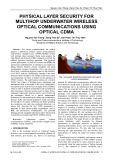


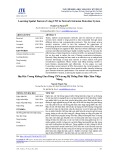
![Biến Tần FR-A700: Sổ Tay Hướng Dẫn Cơ Bản [Chi Tiết]](https://cdn.tailieu.vn/images/document/thumbnail/2019/20191130/cac1994/135x160/1741575103503.jpg)
![Xử lý số tín hiệu: Tài liệu thí nghiệm [Chuẩn SEO]](https://cdn.tailieu.vn/images/document/thumbnail/2018/20180821/danhvi27/135x160/7141534836177.jpg)

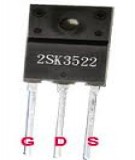
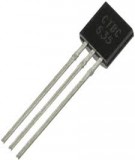







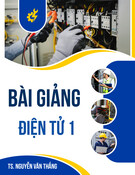


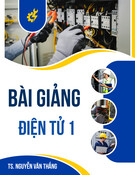
![Bài giảng Nhập môn Kỹ thuật điện [chuẩn nhất]](https://cdn.tailieu.vn/images/document/thumbnail/2025/20251208/nguyendoangiabao365@gmail.com/135x160/60591765176011.jpg)




